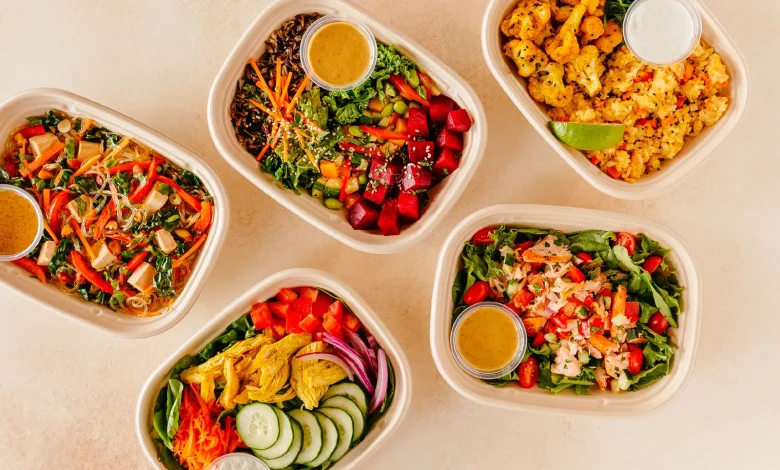Wise Savings: How to Reduce Your Cost of Meal Delivery Services

Key Takeaways:
- Exploring the explosive rise of food delivery services in a technology-driven age.
- Dedicated tips on how consumers can cut food delivery costs without compromising convenience.
- Deep dive into using coupon codes and rewards programs to enhance savings.
- Practical advice on timing orders and limiting fees — a holistic guide to economical food ordering.
The Rise of Food Delivery Services
The dining landscape has evolved dramatically with the advent of food delivery services tapping into the on-demand economy. In our bustling world, the luxury of home-delivered meals has transitioned from a novelty to a daily necessity for many. Many apps now offer access to various cuisines, reflecting the global palate. The sheer convenience and time-saving aspects have led to a surge in usage. Consumers have never had more options with the industry in a robust expansion phase.
Understanding Consumer Spending on Food Delivery
Given convenience, consumers are often less resistant to spending more on food delivery services. The market has seen a noticeable upsurge in average order values as users opt for the comfort of food delivery over traditional dining out or cooking at home. This shift is influenced not only by the allure of convenience but also by the increasing trust in and reliance on these platforms for satisfying diverse culinary cravings. The trend suggests a growing consumer segment prioritizes time savings and ease over cost, yet a substantial group seeks value in every dollar spent.
The Benefit of Comparison Shopping for Delivery Deals
In a market flush with options, intelligent comparison shopping becomes integral. Discerning consumers are turning to websites and aggregator platforms that grant a side-by-side view of competing services, offering insights into cost, menu diversity, and delivery speed. This empowers them to make informed decisions, striking an ideal balance between service quality and cost-effectiveness. An informed choice ensures a delicious meal at a competitive price and might also reveal offers such as reduced delivery fees or bonus items.
Coupon Codes and Their Impact on Saving Money
Coupon codes are beacons of thrift in online shopping. Clever use of discount promotions from services like Uber Eats coupons can lead to meaningful reductions in the total bill. Taking an extra moment to search for codes before finalizing an order can routinely create a more cost-efficient dining experience. As with traditional supermarket coupons, the accumulated savings from such digital deals can be substantial over time, catering to the budget-conscious who wish to retain the convenience of home-delivered meals.
Moreover, the impact of coupon codes extends beyond individual purchases, as consistent use can result in significant long-term savings. With many coupon websites and browser extensions, finding applicable codes has become more accessible. Additionally, subscribing to newsletters or following brands on social media can provide exclusive access to special promotions and discounts. By incorporating coupon codes into your online shopping routine, you can enjoy the satisfaction of stretching your budget while still indulging in the convenience of food delivery. Ultimately, coupon codes empower consumers to make smarter purchasing decisions and maximize their savings potential in the digital age.
Maximizing Rewards Programs
Another avenue where frugality meets convenience is through the rewards programs offered by many food delivery applications. Similar to frequent flyer miles, these programs reward customers for their loyalty with points or benefits that can translate into free food, upgrades, or discounts on future orders. Active participation in these programs can culminate in a more attractive per-meal cost. Coupled with a strategic approach to order timing and meal selection, maximizing these rewards can become a cornerstone of a financially savvy food delivery habit.
Timing Orders Strategically to Reduce Costs
Supply and demand dynamics dictate that ordering during peak times often coincides with higher delivery charges, courtesy of surge pricing models. Alternatively, placing orders during off-peak hours can sidestep these additional charges. Planning meals and utilizing features such as scheduled deliveries also helps users dodge premium fees and supports a seamless ordering experience without the dread of sticker shock when it’s time to check out.
Making the Most of Free Delivery Options
Special promotions and membership incentives often include free delivery benefits that can significantly reduce the total order cost. Savvy consumers watch for these offers, which may be linked to a minimum spend, a specific payment method, or a promotion for new menu items. Leveraging these opportunities when they align with one’s dining plans is a straightforward tactic to curtail unnecessary expenditures while enjoying the convenience of food delivery.
The Role of Subscription Services in Cutting Costs
Food delivery platforms increasingly offer subscription models that promise various perks, including reduced fees or exclusive offers to subscribers. For customers who frequently order, crunching the numbers may reveal that such programs can lead to savvier spending. Subscriptions offer a predictable cost structure that can be factored into one’s budget, transforming what can otherwise be seen as a luxury service into an everyday convenience.
Practical Ways to Limit Additional Fees
It’s no secret that additional fees can accumulate stealthily, turning a reasonably priced meal into an unexpectedly pricey affair. Service charges, small order fees, and special instructions can layer on costs. Consumers should review their detailed order summary before purchasing to keep spending in check. Here lies the empowerment of choice: to accept the additional cost for added convenience or to tweak the order to sidestep these fees. This empowerment only comes with awareness and information.
Conclusion
With technological innovation at the heart of the food delivery industry, it is poised for further evolution. How savings can be made will likely become more streamlined as delivery platforms vie for market share in a crowded ecosystem. In a prediction, tech advances should cater to consumer preferences, granting new avenues to economize while maintaining the allure of quick and convenient dining.
